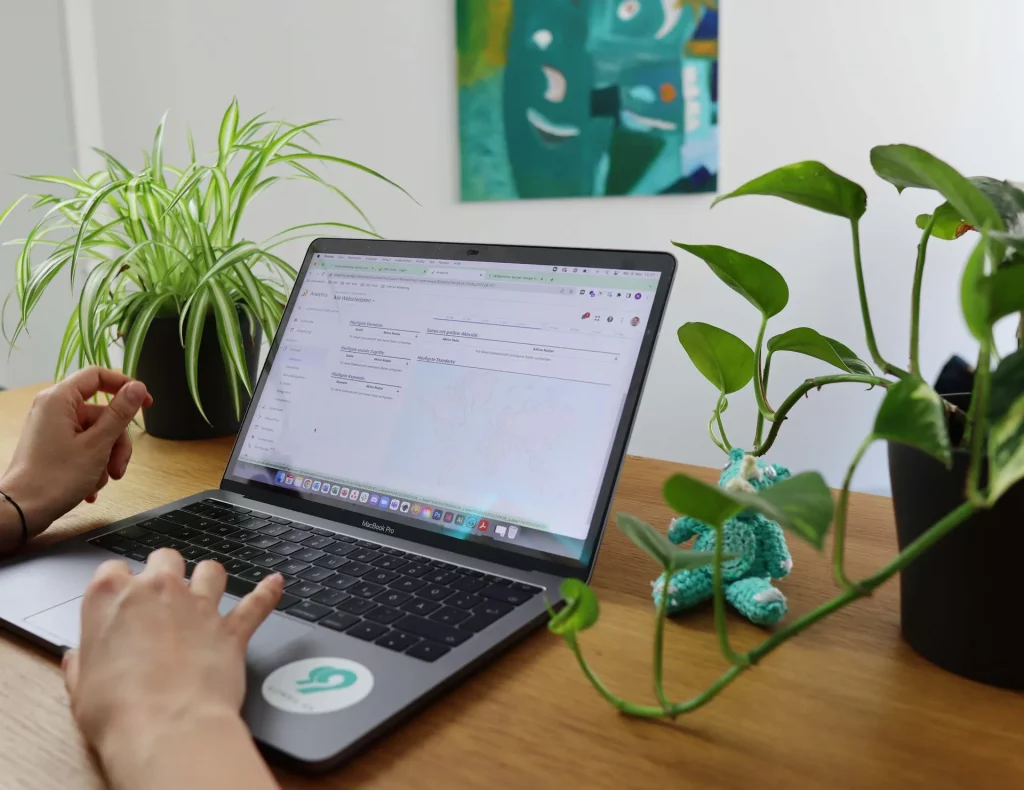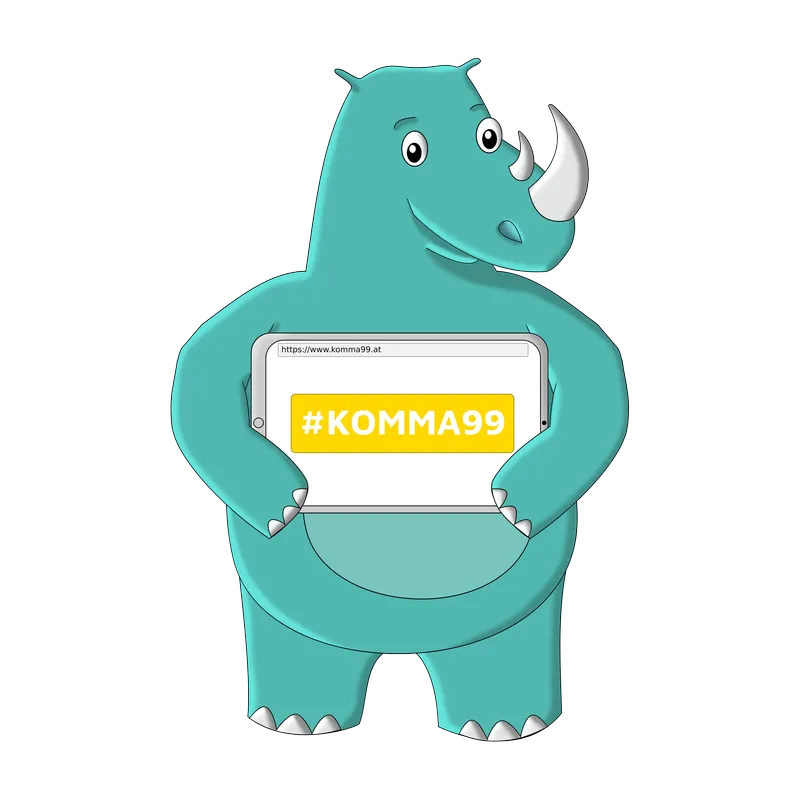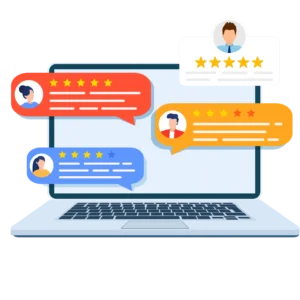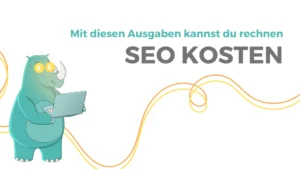More visibility by measuring, monitoring and evaluating the appropriate SEO KPIs!
SEO KPIs (Key Performance Indicator) are used in controlling to determine how your website or online store is "received" and performs by users and search engines.
In this article you will learn which SEO KPIs are relevant for measuring your SEO measures. Additionally we give you an overview about the most important key performance indicators for your SEO strategy.
What are SEO KPIs?
KPI is the abbreviation for Key Performance Indicator and refers to various important key figures, which are set for a defined target. In search engine optimization (SEO) you need these metrics to measure the success of your previously defined to measure, monitor and evaluate.
Also your entrepreneurial success or the achievement of an Conversion (purchase, lead, download, newsletter subscription,...) depends on it.
The more clearly the objectives are defined and the more appropriate the SEO measures are, the more satisfied your visitors and customers will be.
Why you need SEO KPIs and why they are essential for your SEO success!
Which key performance indicators you need depends on your target projects and who (target groups) or what (industries, topics, products, services) you want to address. The data from the KPIs will tell you where and how you need to adjust your optimization.
Search engine optimization is constantly changing, so it is necessary to regularly check your target goals and KPIs and adjust them if necessary.. Of course, this also has an impact on your business success. Because of the constantly changing Google algorithm, it is absolutely necessary to keep an eye on the KPIs and, if necessary, to readjust your SEO strategy.
Through targeted SEO measures you achieve more visibility in search engines, generate more traffic (users on your website) and get closer to your actual goal - conversion. In the best case, your user becomes your customer.
By controlling and monitoring the KPIs, you manage and control your SEO measures and can react promptly to undesirable changes.. For an online store you will need different metrics than for an info blog. As I said, it always depends on what goals you are pursuing.
With KPIs you can make your goals and results of your actions visible and provide a good user experience (UX) to your users. You also increase your business success by offering your users what they are looking for and need. Always keep the added value of your content for the users in mind and with the right SEO measures you bring your website or your company further forward.
 |
A lot of traffic and a high CTR (Click-Through-Rate) are all well and good, but bring nothing if no conversion takes place!
Therefore, prioritize your individual, relevant SEO KPIs for your SEO project and make sure they are tailored to your goals! |
How do you choose the right SEO KPIs?
Before implementation, think about your strategy and what you want to achieve with it. Then decide which SEO measures you want to implement and which relevant KPIs you need. Based on the KPIs, you analyze and evaluate your data and see whether your measures have worked or not.
To find the right KPIs for your business (website, blog, online store) and the right tools to evaluate them, you need to invest enough time, money, expertise, patience and a well-prepared SEO strategy.. The reward for your efforts is success and satisfied users who will gladly come back.
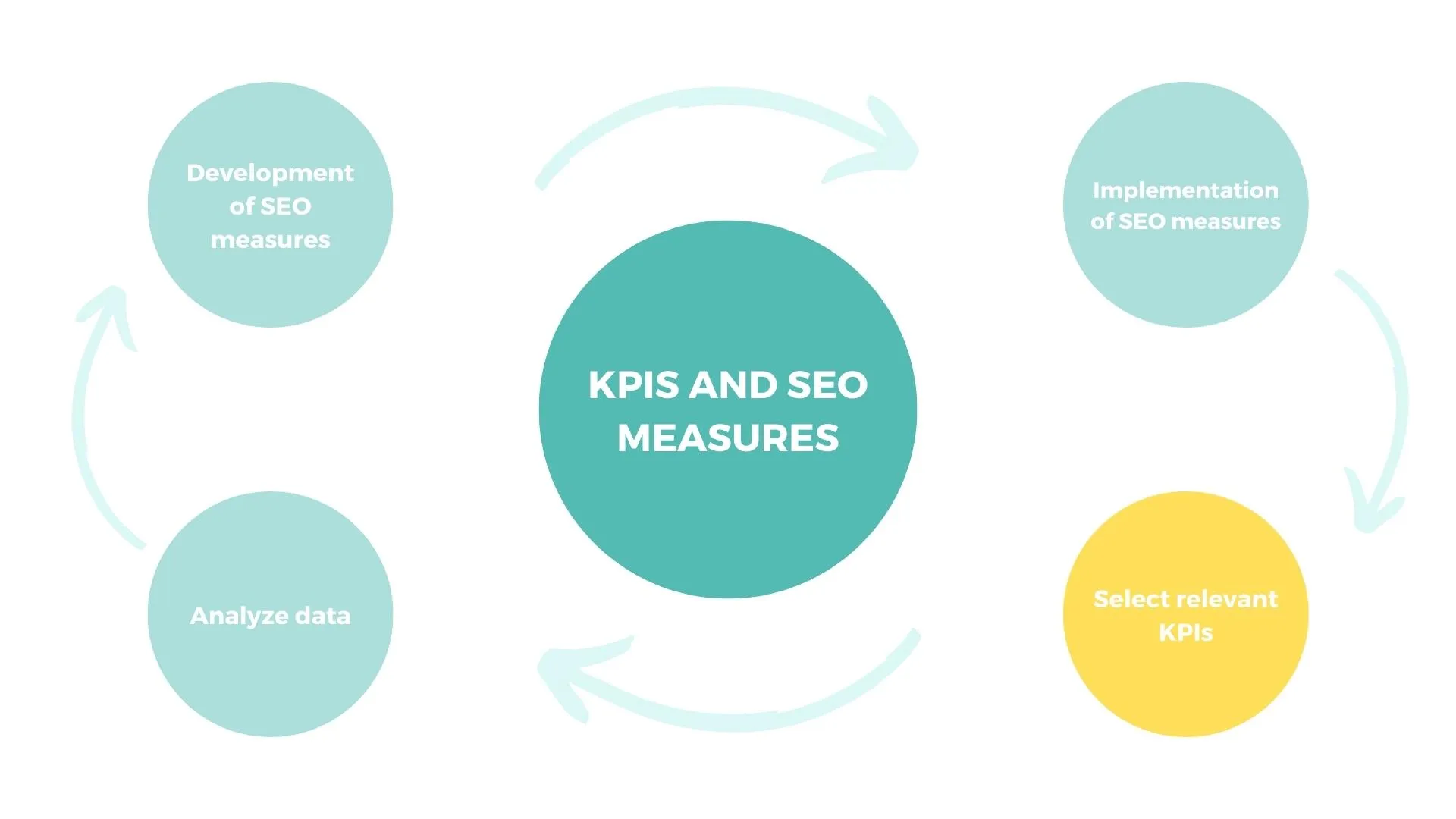
There is a distinction between Onpage SEO KPIs, which you can actively influence, and Offpage SEO KPIs, which influence your metrics from external sources.
To be able to measure, monitor and evaluate the SEO KPIs you need Analysis tools. Some tools are provided by Google for free, such as Google Search Console, Google Analytics and Google Tag Manager. But also use other paid tools (e.g. Xovi, Ahrefs, Sistrix, ...) for your SEO strategy and the implementation of your goals.
The 12 most important SEO KPIs in online marketing
- Organic traffic
- Keyword Ranking
- CTR - Click-Through-Rate
- Number of impressions
- Conversion rate
- Bounce rate (bounce rate)
- Average length of stay (session duration)
- Page speed and display problems
- Core Web Vitals
- Visibility index (Sichtbarkeitsindex)
- Number and power of backlinks
- Trust Rank
Onpage SEO KPIs
These metrics help you measure, review and analyze your web presence. You can so actively influence the values and improve the position of your website. This way, your website will achieve more visibility in the non-paid organic search results (SERPs).
Subsequent analytics tools will help you with your marketing strategy to measure, monitor and evaluate your set KPIs.
- Google Search Console
- Google Analytics
- Matomo
- Google Tag Manager
- Xovi
- Ahrefs
- Seobility
- Linkresearchtool
- PageSpeed Insights
- GT Metrix
- rankingCoach
- Semrush
- Sistrix
- Moz
1) Organic traffic
The "organic traffic" KPI measures the number of visitors to a page who come via organic search results . As one of the most important KPIs, this KPI should not be considered alone. For an online store, it is also important to look at the KPI "Conversion Rate". Useful questions about this KPI:
- When (days/months) are the most visitors on the site?
- How has the traffic changed in comparison from period A to period B?
- Which subpages have the most visitors?
- From where (country of origin/end devices) do visitors come and generate via the organic search Traffic?
- Which keywords generate the most visitors?
Additionally, this key performance indicator can be further refined by sorting by origin and landing page.
The organic traffic can be analyzed for example with the analysis tools Google Analytics or Matomo as well as determined and evaluated.
2) Keyword Ranking
Keyword ranking" is another important metric that shows you how well (or poorly) your relevant keywords are performing. Keywords rank in the search engine. The better the ranking, the more visitors come to the website. This will bring you much closer to your other goals such as traffic, conversions or leads.
This key performance indicator is directly related to your SEO success and tells you whether your relevant main keyword is ranking or not. The goal should be to rank with the keywords on the first page (preferably on position 1-3).
For analysis you can use the following tools: Google Search Console, Keyword Planner (from Google Ads), Xovi, Seobility, RankingCoach or Semrush.
3) CTR - Click Through Rate
The "CTR" KPI shows you the ratio of actual clicks on the website link to the total impressions displayed. - - i.e. how often does a user click on the link and how often is the link displayed in the search results.
The ratio is always given as a percentage and can be calculated using the following formula:
 |
CTR = number of clicks / total number of impressions displayed |
The click-through rate is usually neglected, but should always be kept in mind. The higher the CTR, the better your ranking in the search engine. If this value falls, then you should improve your SERP snippet and make the title and meta description more appealing. The SERP snippet is the first thing the user sees on the search results pages.
It may also be that the search intention was not met or other search results are more relevant and the value therefore decreases. Then you should revise your content and your SEO strategy.
To monitor the CTR you can use the Google Search Console . If Google Search Console is linked to Google Analytics, you can also view the click-through rate in Google Analytics.
Consider the CTR also in connection with the bounce rate. This way you can see if your visitors expected something different in terms of content or if your content was not appealing.
4) Number of impressions
This KPI is a measure of search engine visibility and measures how often your website appears in the non-paid, organic search results. . Every time a user requests a search and your website appears in the search results, an impression is created and captured. In the performance report of the Google Search Console the evaluation of this key performance indicator is displayed.
If the number of impressions increases, then you have placed your content well and the organic visibility increases. This is a good indicator for continuous organic growth. If no one searches for your content or your content is not visible, then high-quality content is of no use to you.
To analyze the number of impressions, use the Google Search Console or Google Analytics tool, as well as Matomo.
5) Conversion rate
The "Conversion Rate" shows you what percentage of visitors perform a certain action. have performed on your side. With the "Conversion Rate" you monitor your predefined goals.
Possible conversions can be:
- Completion of purchase
- Sign up for a newsletter
- Filling out a form
- Download a document, audio or video file
- Sharing a content via social media channels
- Booking a service
- Contact for consultation appointment or course registration
With this KPI you can immediately see if your content is engaging enough for your users and has led to an action. Along with conversion rate, look at organic traffic, CTR, and dwell time KPIs to see how your content is engaging your users.
Formula for calculating the conversion rate:
 |
Conversion rate (%) = (number of actions achieved / number of all visits) x 100 |
This formula counts each visit to the page (also repeated visits) - i.e. if a visitor calls up the website 3 times, then 3 visits are also counted. This can dilute the result, since automatic bots can also visit the page multiple times.
If you want a more accurate result, it is recommended to use the Unique Visitor (is tracked by a cookie). The Unique Visitor is used only once counted as a visitor within a fixed period of time, no matter how many times he visits the page during this time.
Formula for calculating the conversion rate with Unique Visitor:
 |
Conversion rate (%) = (number of actions achieved / number of unique visitors) x 100 |
Note that with a landing page only one Conversion should be possible, as this pursues a specific goal (e.g. registration for a newsletter or course, conclusion of a purchase, ...).
For measurement and monitoring use the tools Google Analytics, Matomo and Google Tag Manager.
6) Bounce Rate
The "bounce rate" indicates the percentage of users who have left your site without making a single click. to transact on the site. As one of the most important SEO KPIs, Google uses this metric as a ranking factor. If the bounce rate is high, it can mean that the user's search intention was not met.
The type of your website plays a big role. If you run an informative website (blog, guidebook), a high bounce rate with a long dwell time can mean that users have found what they were looking for (positive signal). With an online store, on the other hand, a high bounce rate without making a purchase is a negative signal.
Possible reasons why a user leaves the website without interaction can vary depending on the industry, product, country, end device or type of website:
- Search intention was not met
- inappropriate web design
- Too much advertising
- Content is not engaging
- unclear/confusing navigation
- too long loading times
Try to optimize your website so that your users find what they are looking for and have a pleasant user experience (UX). Use the tool Google Analytics or Matomo to analyze the bounce rate.
7) Average length of stay (session duration)
The "average dwell time" shows you how long users stay on your page.. The important thing here is how appealing and targeted your content is for your optimized keywords. Your visitors should stay on your side as long as possible. With this key performance indicator, you keep an eye on the user experience (UX) and can adjust and optimize your content as dwell time drops.
To make users spend more time on your site, you can take the following measures to positively influence dwell time:
- High quality, high value unique content
- Internal linking and linking of interesting content
- provided with infographics, images, screenshots, videos, helpful information
- Breadcrumb navigation
- Add content that encourages the user to interact (downloads, templates, surveys, quizzes, voting, ...)
Based on the average dwell time, you compare how the traffic of organic search results relates to other online marketing channels (SEO, email marketing, social media marketing, content marketing, banner & display advertising, ...). You also recognize which pages should be revised and what impact your optimization measures have on the user experience (UX).
With Google Search Console, Google Analytics, Matomo and the use of Google Tag Manager, you can monitor, measure and analyze this SEO KPI.
8) Page speed and display problems
The SEO KPI "Page Speed" belongs to the technical optimization. Not only the content has to be optimized, but also the technology has to be considered for your SEO strategy. Loading times should be as short as possible . Users who wait too long for the pages to build will quickly leave the site.
Nowadays, many users are mobile on the pages, so you also need to optimize your website responsive and make your Webdesign customize for smartphone and tablet. You will lose many potential customers if the website has display problems. Therefore, always pay attention to a modern and appealing design for the most important devices. Google now also includes the mobile version in its algorithm and thus influences the ranking in the search results.
The ideal loading time for building your website is between 2 and 3 seconds. A longer loading time has a negative impact on the bounce rate, conversion rate and finally on your ranking. The faster the website builds up, the better for your SEO, the users and the Googlebot.
With the tools PageSpeed Insights, GT Metrix and Xovi you can check the pagespeed. These tools tell you where there is a need for optimization on the website. Most of the time, the images are incorrectly embedded on the page (wrong format, different image sizes, no compression) or other technical aspects (JS, CSS) need to be optimized.
Technical improvement opportunities for your website:
- Optimize images - convert to PNG, WebP and size correctly
- Use Lazy Load for hidden images
- Minification of JS and CSS
- Activate or set cache
- Set text web font visibility on load
- Enable text compression - using Gzip, Brotli, Deflate
- Check heading structure (H structure)
- Use CDN if possible
Do you change anything on your website - e.g. publish new content or you extend existing content - then check the page speed of the page. The change may require you to re-optimize the website for your marketing.
9) Core Web Vitals
Google's "Core Web Vitals" KPI is the latest key performance indicator on the market and gives information about the performance of your website. The new ranking signals have only existed since mid-June 2021. Since the Core Web Vitals are based on real user data they are not measured by Google.
This is Google's response to the user and page experience, in that websites are supposed to perform better and the bounce rate is kept low as a result. The Quality of the website comes to the fore through the necessary optimization measures and the user benefits from the better performance. It is about the loading process, the interactivity and the visual stability of your page.
The Core Web Vitals are composed of 3 measurements:
- Largest Contentful Paint (LCP)
This metric indicates how long the page takes from the URL call to the complete rendering of the largest visible element in the "Above the fold" area needs. This is usually an image, a video or a large text element at block level. Google rates an LCP value of less than or equal to 2.5 seconds as a Good and greater than 4 seconds as Slow. - First Input Delay (FIP)
FID is the time span from the user's first interaction with a page (clicking on a button, button or link) to the browser's response. to this interaction - the response speed of the website, so to speak. An FID value with less than or equal to 100 milliseconds is indicated with Good evaluated and greater than 300 milliseconds as Slow. - Cumulative Layout Shift (CLS)
The CLS displays the completely surprising layout shifts of elements as a total of individual values - i.e. it shows you how stable your page layout is while using the website and whether elements on the pages shift during use.. Possible causes for this can be: subsequent insertion of content using Java Script or reloading of advertising that displaces other content. This layout shift can lead to misdirected clicks (button or links) and is extremely annoying for the user. Google rates a value of less than or equal to 0.1 as a Good and a value greater than 0.25 as Slow.
Offpage SEO KPIs
With these SEO-KPIs you measure the external performance of your marketing measures. The values in this area are difficult to influence directly.. These depend on the quality and quantity of the external linking, behavior of the competition, the search engine algorithm, but also the search behavior of the user.
Offpage SEO KPIs can be indirectly guided by:
- Content with added value
- Satisfied customers
- High quality products
- salient USP (Unique Selling Proposition)
- Implementation of onpage optimization
With targeted Backlink building you can directly influence the key figures.
10) Visibility index
The goal of SEO is to increase visibility in the organic search results. - therefore use targeted marketing measures to achieve a good position in the organic search results.
With the KPi "Visibility index (Sichtbarkeitsindex)" you are checking:
- Where your website is located in the SERPs (search results pages)
- How it compares to your competitors
- Whether the website was penalized
For more meaningfulness of the visibility index, only a certain keyword set is considered. This way, you can accurately observe whether the visibility of the page has improved or worsened based on this keyword set. By using a set, you can get a better comparative value.
If all organic keyword rankings are examined, irrelevant keywords are also included, which provide a distorted result for a comparison.
You can only partially influence the optimization directly in this area. You can target your content to your relevant Keywords and optimize the SERP Snippet (title and meta description). Ultimately, much depends on how the Google algorithm (indirectly) evaluates your page and positions you on the SERPs.
Use to check this key performance indicator analysis tools like Google Search Console, Google Analytics, Matomo, Xovi, Semrush, Ahrefs, rankingCoach or Sistrix.
11) Number and power of backlinks
The "number of backlinks" is one of the most important metrics and an essential factor for ranking in the non-paid organic search results on search engines. It states, how many links from external websites point to your own website. It is important to provide high quality Backlinks . From the key figures of this SEO KPI you can see how your website performs compared to the competition (backlink competition analysis).
Those external links (Backlinks) can tell the search engine that it is useful content and give your page more credibility. This in turn affects the ranking of the website, which is then positioned higher. The prerequisite for this is that the referring external website fits the theme of your website and the external page itself has good credibility.
Never look at the number of backlinks alone, but always consider the trustworthiness of the linking websites. Also check which content is linked exactly and whether it is spam links. (Tip: Create a blacklist for bad websites).
With the help of the analysis tools Google Search Console, Google Analytics, Xovi, Ahrefs, Seobility, Semrush can also measure how much traffic is directed to your website via which backlink.
With the Linkresearch tool you can see at first glance (in the SERPs) how many external backlinks and how many referring domains a page has.
Note the following aspects of the metrics for backlinks:
- Number of qualitative, high-quality backlinks
- Number of referring websites to own
- Number of lost links
- Number of new links added
- Backlink profile of the competition (competition analysis)
- Link attributes (is the backlink counted or not - "follow" or "nofollow")
- Positive mention on other websites or platforms
12) Trust Rank
The SEO KPI "Trust Rank" evaluates how trustworthy the website is on a specific topic area. . The decisive factors here are the quality of the backlink profile, as well as the proximity to the subject area of the content of the link-giving page.
Incoming and outgoing links are evaluated here. Spam links or dubious pages can negatively influence this value and your website will be positioned worse. Therefore, always make sure that your Backlinks come from trustworthy sites and they match your topic area. Also make sure that you identify spam links (via Google Search Console) and remove them to increase the trust rank.
Since many factors affect the Trust Rank, it cannot be clearly determined how or what influences it.
Not only backlinks are relevant for the Trust Rank, but also Onpage KPIs like:
- Page Speed
- Dwell time on individual pages
- Privacy statements, imprint or cookie notices
- missing HTTPS certificates
- young domain age of the website
- Change of the website owner
The most popular analysis tools to determine your Trust Rank are Moz, Majestic, Linkresearch Tool, Ahrefs.
SEO KPIs - The Conclusion
First, think about what your goals are for your website and what you want to achieve with it. Ask yourself questions like: How do more users convert to customers in my online store? How do I get more readers to my site? How big is the potential in my area? How do users stay longer on my website?
Always base the selection of the appropriate SEO KPIs on your goals and your business. Create your own SEO strategy, only then you can react to changes promptly and provide your users with high quality and valuable content.
Stick to an old saying: "The customer is king" then your business success will be on a steep uphill climb. Because satisfied users (customers) always come back.
Always consider the SEO KPIs in context with each other. Individually, they never have the significance that an overall picture of the related KPIs.
Don't forget to adjust your KPIs from time to time as search engines evolve and online marketing changes with user behavior.
Also set fixed times for your analysis so that you create an interval for your evaluations and thus a regularity. With this regularity, you can immediately see what is changing and how you need to react to it.
Don't just use Google tools, use other tools to get the data for your marketing strategy and have a better overview.
Analyze your competition and find out what keywords they are using, how they are ranking and how you can outrank them with your strategy.
Keyword rankings and organic traffic are not everything. Also consider that it takes technical know-how and sensitivity for your users to make your site perform well. After all, you want your website to rank high in the organic search results.
I hope I was able to give you a good overview of the most important SEO KPIs and keep in mind that there are tons more KPIs that could be useful for you.
With your newfound knowledge, I wish you much success and good luck with your project!

